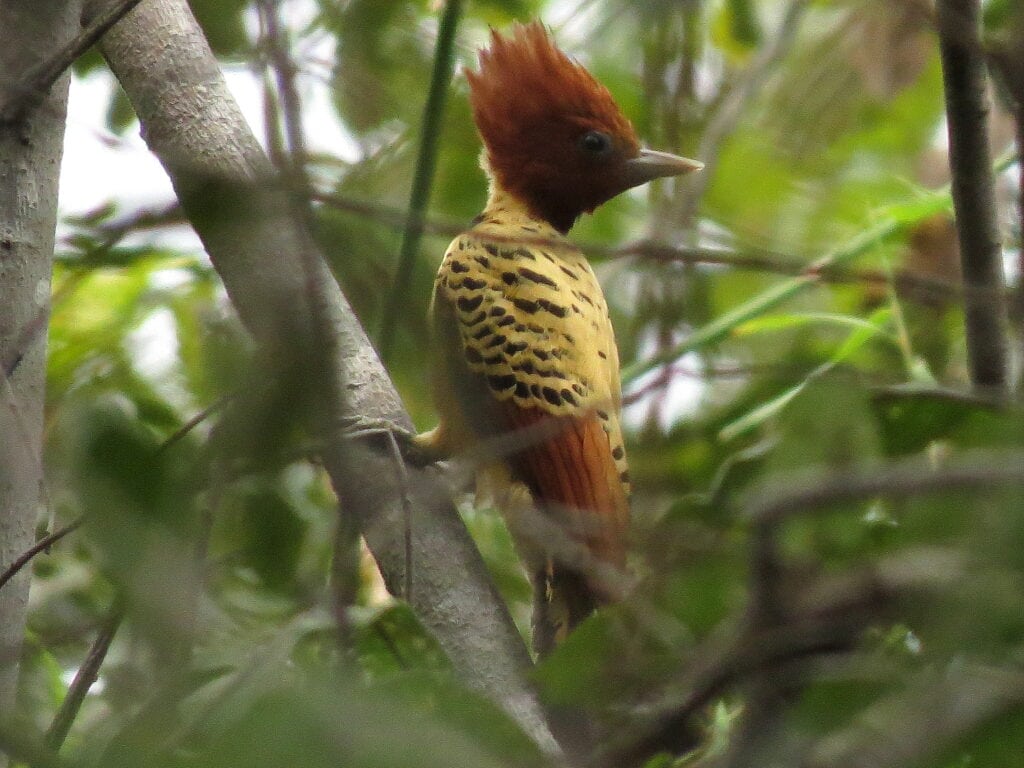Protected habitats are key to most conservation strategies. Habitat degradation or outright loss is one of the most significant contributing factors in the decline of many bird species. In much of the world, governments are responsible for establishing protected habitats and enforcing their protection. But what happens when conservationists grow desperate to protect a bird whose vital natural territory is not under the protection of any government organization?
Related Article: Microplastic Pollution is Affecting the Gut Health of Sea Birds
In the case of the Kaempfer’s Woodpecker, the solution that conservationists came up with was to purchase the swathe of territory where this bird is found.
To really understand why this was done, you need context. The Kaempfer’s Woodpecker is not on quite the same level as many of the birds that we consider to be threatened or endangered. These unique ruddy-colored woodpeckers were first described in 1926. After this first specimen was collected, this ultra-rare woodpecker was not found again until 2006. Up until 2006, it was widely speculated that the Kaempfer’s Woodpecker may have gone extinct. Since the, only about 25 individual birds have been seen, making this one of the planet’s rarest birds.
With such a small population and such a mysterious history, it’s no wonder conservationist groups are so desperate to protect this enigmatic bird. Considering its rarity, you might be surprised to learn that there have historically been no protected habitats for this bird. The Kaempfer’s Woodpecker relies on the vanishing Cerrado Savannah of Brazil. These territories are often destroyed and repurposed as agricultural land.
The section of Cerrado Savannah where most Kaempfer’s Woodpeckers seem to live borders on Cantao State Park and Araguaia National Park in the Araguaia Valley of central Brazil. Despite the existence of the state and national parks so close to the habitat, the parks’ protections only extend to the Amazonian side of the area, and not the Cerrado Savannah. Because of this, a non-government organization has purchased 470 acres of Cerrado, establishing them as the Canto Obrieni Reserve. In the following years, hundreds of further acres of Cerrado were purchased to add to the protected territory.
The purchased land was originally going to be sold to a nearby soybean farm, and the NGO’s purchase has likely resulted in the conservation of a habitat that would have been destroyed for agricultural use. Much of the Cerrado Savannah remains unprotected, but with land purchase as an avenue for protections when governments move too slowly, there is hope that these territories can be saved and that the Kaempfer’s Woodpecker may be saved along with them.
Popular Article: Parrots Make Virtual Friends to Combat Loneliness

